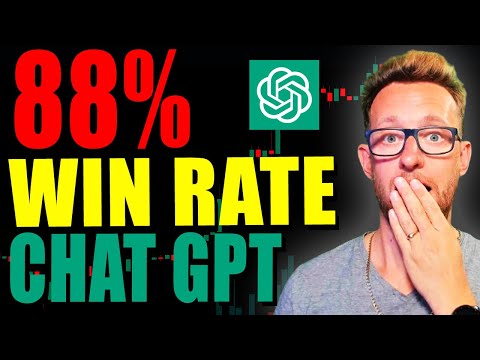Heads On A Swivel

[MUSIC PLAYING] KONSTANTIN VRANDOPULO: Hello, welcome back to another episode of In The Money. I'm Konstantin Vrandopulo with Fidelity's Trading Strategy Desk. And with me as always, Jessica Inskip, Director of Education of Options at OptionsPlay, and Tony Zhang, Chief Strategist at OptionsPlay. Both are frequent CNBC contributors as well. It's great to see you again.
Welcome back. JESSICA INSKIP: Thanks for having us, KV. Look forward to the conversation. TONY ZHANG: Great to see you, KV, as well. KONSTANTIN VRANDOPULO: Awesome, well, guys, it's December 8, Thursday afternoon as we are going live in this presentation here. We're now into the last month of the year.
It did fly by fast. But I got to say, for most of clients that I speak with, it's been an emotional and a financial roller coaster for sure. Given the fact that December is still action packed in my opinion, plenty of things to look forward to, we've got to keep our heads on the swivel, as a good friend and colleague of mine used to put it, on the strategy team, Mr. Colin Songer.
You know, Jessica, I'm curious, what is on your radar going into the next couple of weeks? JESSICA INSKIP: Yeah, so from a macro perspective, we are certainly counting down in my opinion, searching for a catalyst as we're awaiting Fed Powell's decision to understand how restrictive policy is going to be. That occurs on December 14. So from a technical perspective, we were watching the 200 daily moving average.
We briefly surpassed that. And then, of course, that downward sloping line that we see ever so clearly on the broader market to see the ends of this bear market rally, which of course, we tested, and now have retracted. Now in the interim, as we wait for that Fed decision on December 14, we have a lot of data that we need to consume that can help give us some certainty to this uncertain environment, if you will. So really focusing on the labor market and economic data as we are watching those key levels, which is that downward trend line, and the 3,900 line that we have been talking about consistently. KONSTANTIN VRANDOPULO: Jessica, we shared this chart, and discussed it at length during the November 17 show.
You and I were live in Boca Raton, Florida. Had a great time. You actually had a trade idea on this one, and it's playing out pretty decently right now, at least so far a couple of weeks in. You know, Jessica, so we're looking at obviously, technical levels here. The important thing to remember, we don't ever use technical analysis for predictive purposes. By nature, we just look at the chart, identify where the underlying currently is in the context to where it has been in the past.
And using this information, we'll project some possible outcomes in the future. If we are placing a trade, whether we decide to or not, we're just looking for levels to react against, right? That's exactly what we're sort of doing, but it's amazing how technical analysis sometimes plays out. I got to say, by the way to everyone in the audience, if you are interested in reviewing that trade idea, you can always find it by going to fidelity.com/options
and watching the recording. So curious to see what's the trade idea of the week given the circumstance, Jess? JESSICA INSKIP: And so given the circumstances, I actually had a focus on a labor market and did some analysis on that with revenue exposure and where it's growing. And GE was the result. So let's take you through that by looking at some charts. So from a relative perspective, GE falls under industrials.
So we want to look at the industrials index relative to the S&P 500. Now, you'll notice a breakout from that resistance zone, which is giving an indication that industrials is beginning to outperform, if you will, the S&P 500. Now, from a labor market perspective, that's something that red hot labor market, that is an inflationary driver. So there is heightened views on that data. We're looking for that to cool off, but we can also use the labor market as a proxy of something that is expanding or growing.
Pulling the labor market data, job openings are increasing 6% year over year, and increasing month over month for the aerospace sector that's found within the industrials. Now, pulling a security that has high revenue exposure to that, GE came up on that list for the screen. They have about 26%, which is revenue exposure to aerospace. And that certainly makes sense as we see that shift over to services.
People are traveling, so on and so forth. So that's what prompted finding GE. Now, looking at GE relative to the industrials, you'll notice a downwards trend line. Now, we want to see if that will break out in perhaps a catalyst of some sort. And we see that GE has gone above that downwards trend line from a relative perspective.
So this is really prompted me to dive further into GE'S exposure. KONSTANTIN VRANDOPULO: Yeah, Jessica, relative strength charts can be a very simple, but a very powerful tool. You often bring them up. Tony does as well. I absolutely love it. We're just comparing one asset to the other.
I want to remind everyone in the audience of course, that the value on the relative strength chart, the actual number associated on the right hand side on that scale on the y-axis doesn't really matter. What does matter, however, is the slope of the line. Is it positively sloped? Is it negatively sloped? I would also advise everyone in the audience, don't be afraid to draw trend lines, or potential areas of support or resistance on those things, just like Jessica is doing here. Well, Jessica, I guess the last thing to look at would be, what is the stock actually doing from the technical perspective? JESSICA INSKIP: Absolutely. So GE is a security that is above its 200 day moving average. And that's something that's a little rare to find.
It's certainly out there. So that prompts some support. That's definitely a key support level. Now, there was a support line around 85, which was broken today, which is where this trade was structured around. But I think this is a great opportunity to talk about how that trade was constructed, and the anatomy of it using that support level.
And actually, Tony pointed out to me earlier that GE is finding beautiful support on its 150 weekly moving average. And so that's an important component to know of is, when we break a support line, we're going to move on to the next one. And anything that's weekly and smoothed out, that's a bigger picture, which can give of course, be indicative of more strength. Now, from the trade, this is a longer term view. We were seeking revenue exposure to something that is expanding from an employment perspective, which was that aerospace sector.
And because it's a longer term view, and we've been talking about this consistently, the way that I like to utilize options to add to my longer term portfolio is via selling a cash covered put. In comparison to buying the security outright, you still retain substantial risk exposure. However, if you are assigned and the underlying security moves below your strike price, I am still containing that substantial risk exposure, but at a discount, in comparison, utilizing the premium that I received. So the trade that I structured was selling a cash covered put.
At the time of the trade, it was at 85, which was that support level, which again, I would adjust if I was placing it now because there is a new support level, which would account for additional premium. KONSTANTIN VRANDOPULO: Yeah, Jessica, obviously, the trade structure in and of itself is pretty straightforward. I guess the important part is what you are describing in additional detail. We're always thinking about a risk managing a trade given the circumstances you're evaluating, all of the details of what you're looking at.
You started with the sector to the S&P, then the individual security of interest to you to the sector, then breaking down the actual technical view of the chart, of the underlying, coming up with that outlook relative strength versus the sector, versus the S&P, and then finally to a chart. I'm curious, given the fact that in this trade structure you have a reward that is limited to the amount of credit received up front, but the risk is substantial, you know, kind of looking at the time of this trade when this was created and presented on the slide, I mean, your break even point is practically just a little bit underneath those most recent couple of weeks worth of lows. Just maybe right on or around that 200 day simple moving average, maybe somewhere around that 150 week, right? It doesn't matter what time frame you're using.
We're giving you some references. I'm curious, if the stock really starts showing relative weakness though, if it breaks down through this level, I understand you want to add it to your portfolio. But how would you manage this trade? How would you go about it if so? JESSICA INSKIP: Yeah, absolutely, so it is a longer term view. And if we have all those macro headwinds that are unresolved, that can certainly impact a security, even if it has positive earnings and healthy profit margins.
That's so important to be cognizant of in this type of market environment. Since it is a longer term view at that point, if it does move down, or perhaps about 100% of my max gain and I'm at a loss at, I would consider rolling it at that point, because it's something that I want to add to my longer term portfolio. But before I consider rolling it, notice, I use the words consider, I want to make sure that that evaluation still stays the same. Do they have any unsuspected events that have caused GE to move down to a lower support level that would not come to fruition with my initial theory of that expanding employment within the aerospace vector? If that has changed, then my view must change, in which case, I would just exit the strategy and move on to the next trade. KONSTANTIN VRANDOPULO: Very good.
Well said. Well, Tony, you've been quiet, because I haven't brought you in. It's time to bring you in, sir, for your commentary I'm curious to hear what your trade idea of the week is. TONY ZHANG: Yeah, I want to take a look at Yum! Foods the operators of KFC, Pizza Hut, and Taco Bell.
We usually think of fast food as relatively recession proof, but when I take a look at Yum! Foods, I see that the valuations here are a little bit concerning for me, especially as you go into a challenging inflationary environment that is typically quite sensitive for the restaurant industry. But let's come back to that. Let's first take a look at a chart here for Yum! Foods. It's largely been trading within this range of about roughly $100 to about 135 over the past year or so. But very interestingly here, we've seen the stock rally nearly 25% over the last two months.
And we're just reaching a point that's shy of that upper bound. And from my perspective, when you couple this sharp rally with some signs of classic exhaustion. This leads me to believe that we're due for some bit of a pullback here. And a key level that I notice here on this chart is $122. That goes back pretty much over the full year.
This is a level that has been a very key level of support and resistance over the past year of what sometimes is referred to as a point of control. So I'm thinking that this is a stock that's a little bit overbought, a little overheated, and can pull back down to about that 122 level. KONSTANTIN VRANDOPULO: Yeah, Tony, for those of you who are not familiar with Yum! Brands if you're looking at it and thinking it's the first time I've heard of the stock, I mean, you probably have heard of KFC. You probably have heard of Taco Bell, right? You know, so this is a company that obviously operates in hundreds of countries around the world.
So kind of an interesting situation here, Structurally, Tony, I remember very well February of 2022 this year, just about 10 months ago, the stock reported earnings, and there was a big gap up from the prior days close. I think the stock was up in the early morning hours around 7%. And unfortunately, that day didn't finish out on the highs of the day. It finished on the lows of the day, drawing down around 4% from its peak that day. Now, that marked the short-term reversal, the short-term top.
And here we are 10 months from that point on just testing those levels a couple of days ago. So very, very interesting. You know, I'm curious about the fundamental take, I guess, given their international exposure and such. TONY ZHANG: Yeah, so the one thing that they have been able to do quite well is shift into more of a technology focus, which we've seen a lot of fast food companies, and even casual food companies do quite well. And they have seemingly executed on that. We've seen some margin expansion here with their technology initiatives that have been able to drive what we call off premise sales with food delivery apps.
But if you look at the valuation here, this is what's concerning for me. It's currently trading at about 25 1/2 times next year's earnings. That is a relative premium to the S&P 500 of about 45%.
Now, that's a pretty significant premium relative to its historical average, because this is a stock that typically trades roughly in line with where the S&P 500 is currently trading, and especially if you consider the inflationary environment that we're heading in. Food cost and labor costs is extremely sensitive for the fast food industry. So from my perspective, when you consider that, and the fact that as you said, they operate in hundreds of countries, they operate over 50,000 locations in hundreds of countries, there's significant room here to the downside in my opinion, from an multiple contraction perspective, especially when you factor into the FX headwinds that we are expecting to see here from Yum! Foods or Yum! Brands over the next year. KONSTANTIN VRANDOPULO: That foreign currency exposure, can't forget about that. Well, what's the trade structure, Tony? TONY ZHANG: Yeah, so if you take a look at Yum! at the current moment, options aren't particularly expensive, or particularly cheap.
If you look at the IV percentile, it's only at about 23%. And when you consider the fact that my downside target here of 122 isn't overly aggressive relative to where the stock is currently trading, the trade structure that I prefer to use in this moment is to use a call spread. So this is a strategy that will be profitable if the stock stays where it is, or moves slightly lower. So the trade that I'm looking to go out to is about the January 2023 expiration.
And I'm looking to sell the 130-135 call spread for roughly today about $2.10 credit that you can collect just a few minutes ago as I was looking at this. And this is a trade structure that will be profitable, again, as long as the stock stays below $130, risking roughly about $290, or about 2.7% of the stock's value if Yum! Brands does exceed that 135 upper bounds, basically breaking above that resistance level from earlier this year, risking about 2.7% of the value
if it does break above that 135 level. KONSTANTIN VRANDOPULO: Yeah, Tony, I mean, obviously, a neutral bearish outlook on this one here, more than 1/3 of the width of the strikes in credit terms, upside risk is limited. What I'm noticing by looking at this underlying, what caught my eye I guess is that the options liquidity is not ideal in this one.
I was looking at the 90-day average daily volume, and it trades about 700 contracts, a little bit less than 700 contracts ADV for the past 90 days I'm curious in this situation, where bid offer spreads are wider than we would probably prefer to see them or have them, how would you go about executing orders? What would you suggest to traders out there? TONY ZHANG: Yeah, that's a really good thing that you're pointing out here. The one thing I will say is Yum! Brands as a trades roughly about a million shares a day, which from my perspective, liquidity-wise is sufficient in order to trade options. The strikes that I'm referring to still has about 2,500 contracts of open interest each. But I think your point is still valid, the fact that these are not the most liquid options that we can find in the options space.
So in order to trade these, my preference is to always to use a limit in order to execute this. I was referencing that 210 price before in terms of credit. That's where I would place a limit order, pretty much at the midpoint. Especially with a million shares traded a day, you should still be able to get filled very close to the midpoint using a limit order on most of these types of trades. KONSTANTIN VRANDOPULO: Yeah, when you're putting in a limit order, the important thing is that you're always receiving a credit that you're willing to receive for execution, or always paying the debit that you're willing to pay, and you can move it up or down right based on what you see in the market once you place that order.
You can always work it up or down based on your preference. Very good. Tony, we do have a trade that we want to take a look back at. It's a trade that was actually presented by Jessica, I believe, on your behalf on November 17 when we're together in Boca.
TONY ZHANG: That's exactly right. So in my absence, Jessica, three weeks ago was able to pitch my thesis on energy, which was the fact that I felt that energy out performance was coming to an end, and there was a risk that we're going to see a decline. And since that day we've seen the energy sector decline by roughly about 8% since then. So on that day, the December 30, 136, 150 call spread on VLO. At that time, we were collecting about $4.75
for this $14 wide credit spread. So as of right now, that credit spread is trading for only about $0.55, which means that we've made about 88% of the max gain on this credit spread.
So when you make those types of profits, in my opinion, it's time to take this trade, take profits on this trade, full profits, and simply move on to the next trade. When you have roughly three weeks left going into what is thinner liquidity into the end of the year, from my perspective, it's not worth trying to collect the other $0.55 and still take on the risk over the next three weeks. KONSTANTIN VRANDOPULO: This is great, Tony.
This is what trading is all about. You create an outlook. You executed the trade. You're evaluating information as it comes at you, right? Sometimes, you book profits, and that's exactly what you're doing here. That's a feel good moment. Sometimes, we have to book losers, right, and evaluate what went wrong, and hopefully, not make the same mistake, if there was a mistake in your view.
So conditions call for changes.. Options do require some handholding. They require some active management from time to time. Very good.
Well, ladies and gentlemen, that brings us to a close. I really want to thank everybody for showing up. I want to thank Jessica and Tony, of course, for bringing us new and interesting trade ideas every week. JESSICA INSKIP: Thank you for the engaging conversation as always. TONY ZHANG: Thank you for having us. It's a pleasure to be here.
KONSTANTIN VRANDOPULO: Great. Well, everyone in the audience, again, if you're interested in additional information around Tony and Jessica's trades, and you're curious on how the Fidelity platforms work in order to accommodate these trades, please join the Trading Strategy Desk. Tomorrow afternoon we're doing an In The Money follow up each and every week. You can find that by going to fidelity.com/int themoneyfollowup. Then of course, don't forget to subscribe to the Fidelity's Active Investor newsletter by going to fidelity.com/act iveinvestorweekly.
We'll see you again next time. Take care, everybody. [MUSIC PLAYING]
2022-12-14 05:46


